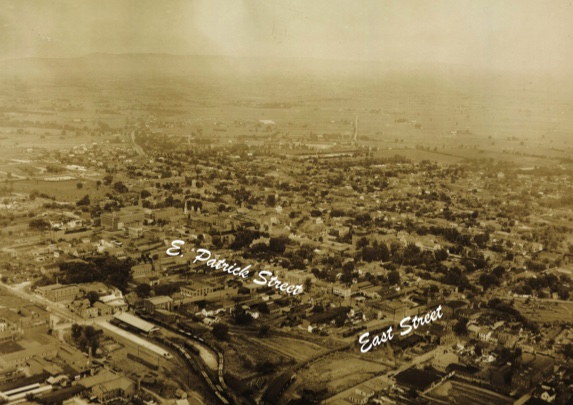As the century progressed, industrial focus shifted from iron and glass works to construction-related needs and agricultural innovations. Larger scale manufacturing trends brough textile and clothing factories, along with canning plants, to Frederick. The city’s industrial landscape continued to evolve in response to national trends.
At the turn of the 20th century, a shift from grain farming to dairying led to the establishment of new processing industries in east Frederick. The Baltimore and Washington White Cross Milk Company operated the first large-scale industrial dairy factory directly on the B&O branch line, capitalizing on improved transportation and refrigeration.
Post-Civil War, Frederick County experienced a surge of urbanization, industrialization and labor management. By 1870, the County ranked second in the value of manufactures after Baltimore County. Canning factories, including the Frederick City Packing Co., Monocacy Valley Canning, and Colt & Dixon Packing thrived along with the B&O line, contributing to the City’s growth and the establishment of new residential areas.
The 20th century brought expansion to companies like the Everedy Company, who produced various metal items for domestic use (think cooking utensils, door hardware, and bottling equipment), and were a significant contributor during World War II. However, by the second half of the century, changes in the international economy led to the decline of small manufacturing companies like the Ox Fibre Brush Company and Union Knitting Mills.
Recognizing the historical significance of East Frederick, the City’s 2010 Comprehensive Plan identified many sites as potential candidates for Historic Preservation Overlay (HPO). In January 2016, the Mayor and Board of Aldermen voted to place an HPO on three iconic properties: the Frederick City Packing Company, the Ox Fibre Brush Company, and Union Knitting Mills.
Embracing adaptive reuse principles, many of these historic sites have been repurposed with new life while maintaining their historical integrity. What was once Colt & Dixon Packing is now home to Frederick County’s Visitor Center whereas the Ox Fibre Brush Company is now the Ox Fibre apartments providing an affordable housing option in east Frederick. And looking forward to 2024 and beyond, remnants of east Frederick’s old Pennsylvania Railroad line will be converted into shared use paths in various phases until it connects to the county segment. Join us in preserving and celebrating the heritage of East Frederick – a testament to the City’s industrial and agricultural legacy that has left an indelible mark on its history.

